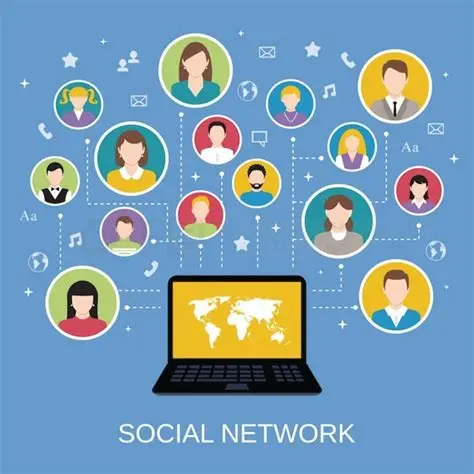According to Goffman’s theory, we are performing on a stage, which needs us to be formal in front of public, this is the Frontstage. And there is another stage called Backstage, where it lets us relax and take off our masks. There is a difference between two stages, we tend to perform us as many personalities to public to get many things we want from society, so we leave many of us to others and do some impression management. And how did it change in modern society? Usually in social media, I’ll say an interesting phenomenon in China.
With the development of media technologies, social media appeared, the digital world was created, people don’t need to perform only in a real world, just face to face. We can choose to be another self in a digital world, which can be different from the person in real world. So, there existing an interesting phenomenon in China that can be seen from Chinese social media groups, some users will use cute animation girl as their head photos to leave a first impression, but most of them are men, not women. This may be confusing to a person who know nothing of Chinese internet, so if we want to get to know this phenomenon, we need to try to understand the background of China at first. China is a highly developed and industrialized country with enough labor force, being called as east Asian monster house with several countries. Due to the huge labor force, individuals are always not valuable. The way to test students’ ability is merciless, teens’ mental health isn’t valued, there are too many too many people in China, many teenagers will consider themselves as loser in real life. But with the appearance of social media, teenagers got a chance to choose who they want to be again, this was another chance to pursue relief, some of them chose to construct cute anime girls as their online identification. Then they become many different affinity groups. But the process and how public see them are dynamic. At first, using animation head photos, and perform like a totally different person can be seen as teens on their backstage, But when these group received more people, and had enough influence, someone will also take part in to perform in these groups, like on frontstage, which means there are some identification recognition formed in there groups, performing as I like this series or I like animation, manga, games and so on can benefit someone to show themselves and manage impression. Social media can be a place to let others relax or perform on a stage; this situation is causing many chaotic phenomena. There is a special point for this guy who uses cute anime identification on social media in China, different from Japan, Japanese who likes ACG (animation, comics, games) will be seen as the trash of society, loser and underdog. But in China, who use cute animation head photos is the one who does the most practical thing, this is a stereotype, not only a bad stereotype, it’s an acknowledgement and praise of this guy like programmers, who may lack of sociality ability, but are focusing on doing some skillful things. If we say their self construction and presentation not only individually, but also systematically in a structure, this is also a way how Chinese youth fight against with stubborn old values and changed them, which means the action constructing and presenting ourselves is also shaping the whole structure, and the structure is influencing our goal to perform in social media.



Your blog presents an interesting application of Goffman’s theory to Chinese social media. To strengthen it, you could make the connection between theory and examples clearer — for instance, by showing how platforms like Weibo or Xiaohongshu become “stages” where users perform different versions of themselves. Adding a short link to digital identity or medium theory would also make your analysis more coherent and insightful.
This post provides an interesting application of Goffman’s “frontstage/backstage” theory to Chinese social media culture. The example of anime avatars is insightful and helps explain how digital identity allows self-expression and escape from real-life pressure. However, the argument could be stronger if it included more critical analysis of gender, power, or cultural context—why certain identities are more accepted or stigmatized online.